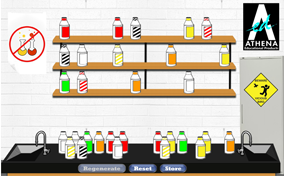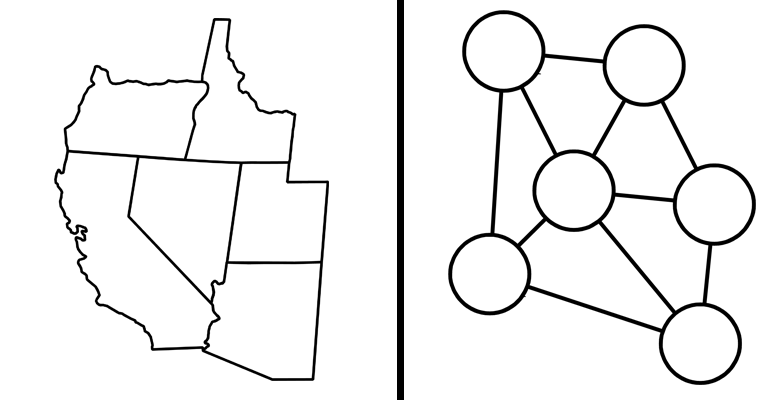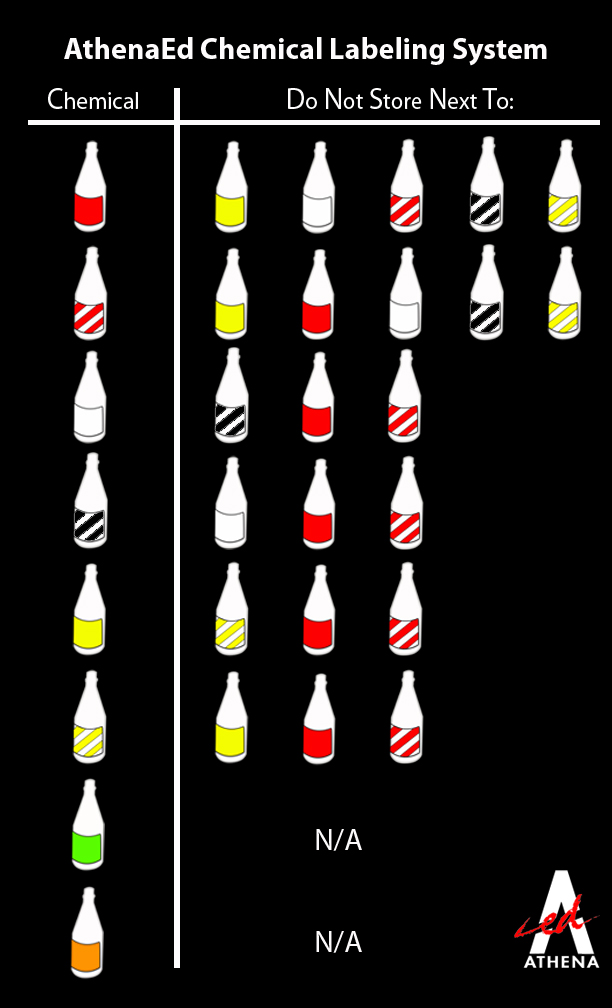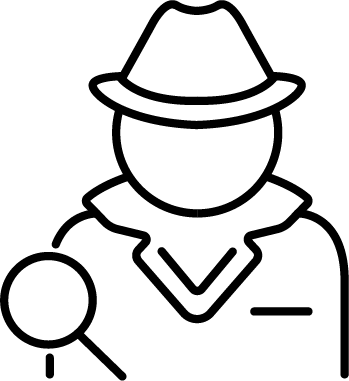Map Coloring

Imagine that you're in charge of a chemical storage room. Should you store alkanes and ammonium nitrate together? They both start with the letter "A" so finding them would be easier. But wait, they can interact dangerously if placed too close together. Your challenge is to use the principles of map coloring to devise a plan to safely store reactive chemicals. I hope you're ready to have a blast! Or not, hopefully.
What is map coloring?
Map coloring is the coloring of a map using a set number of colors in such a way that no two adjacent regions have the same color.What is an adjacent edge on a map?
An adjacent edge of a region is one that is also an edge of a neighboring region. Two neighboring regions that share an adjacent edge are considered adjacent regions. Two regions that are diagonally across from each other and only share a corner (but not an edge) are not considered adjacent.What is the difference between a map and a graph?
Maps usually depict geographical areas, but they can also depict things such as the brain or parts of the universe. A graph is a diagram that represents the relationship between one thing and another. While both maps and graphs are visual representations, a map shows the layout of what it is representing, and a graph shows the relationship between the values of two things. Maps can be turned into planar graphs by representing regions as vertices and placing edges between regions that touch each other. For example, in the image below, the map on the left can be turned into the graph on the right.)
What is the Four Color Theorem?
The Four Color Theorem states that only four colors are needed to color any planar map such that no two adjacent regions will have the same color.What is the chromatic number of a graph?
The chromatic number of a graph is the smallest number of colors needed to color a graph in graph coloring.What are hazardous chemicals?
Hazardous chemicals are any chemicals that pose a physical or health hazard. Physical hazards include flammable and combustible liquids, explosives, and water reactives.What is a chemical labeling system?
A chemical labeling system is a method for marking chemical containers with instructions on how to handle and store them. The Occupational Safety and Health Administration (OSHA) enacted the Hazard Communication Standard (HCS) which requires all hazardous chemicals be labeled with information regarding the identities and hazards of the chemicals.AthenaEd Chemical Labeling System:
)
Walkthrough
Tier 2 Lessons: Grades 7 - 12+
You need to log in to access this simulation.



